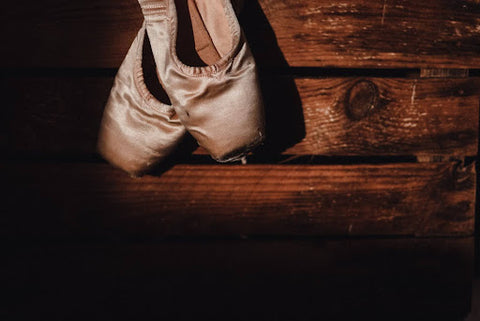Free shipping on all Australian orders over $75

Selecting the appropriate ballet shoes is crucial for enhancing form, posture, and technique. Dancers are often spoilt for choice with a multitude of styles, fabrics, and colours, making the decision a challenging one. This choice becomes even more daunting for beginners. Terms like ‘full sole’ and ‘split sole’ ballet shoes are often thrown around, leaving one confused about which shoe to choose. For those with experience, the decision can be daunting when contemplating an upgrade or sticking with their current shoes.
So, we’re here to provide you with a guide to help you choose what’s right for you.
When the sole of the shoe extends from the heel to the toes, covering the entire foot, it’s classified as a full sole ballet shoe. This design ensures that the entire underside of the foot is in contact with the floor, offering a more unified surface for movements such as pointing, flexing, and balancing.
These shoes feature a split sole design, where the sole is divided to cover the heel separately, with another section covering the ball of the foot and the toes. The remaining part of the foot is covered by the fabric of the shoe, allowing more flexibility and mobility in movements. This split sole offers a natural feel of the floor, highlighting the dancer’s foot arch when pointing or flexing.
For both types, the shoes are light and round-toed with a flexible sole.
Foremost, whether you’re a beginner or an advanced ballet dancer, it’s crucial to prioritise a snug fit when purchasing ballet shoes. Accordingly, you’ve to select the size and width based on the guidelines provided in the size chart.
With regard to the material of the ballet shoes, it’s important to remember that leather is often favoured for beginners as it helps strengthen the foot muscles, providing more resistance and support. On the other hand, canvas is known for its flexibility and its ability to mould to the dancer’s feet, offering a more customised fit and allowing greater freedom of movement.
For beginners, it’s advisable to go for full sole ballet shoes. These shoes offer increased resistance compared to split sole ballet shoes, aiding in the development of foot muscles and muscle memory. Additionally, they provide better arch support, a crucial element for beginners. Consequently, instructors often favour the use of full sole ballet shoes for their beginner dancers, so they have a more secure and stable foundation for learning ballet techniques.
As dancers become more experienced and gain confidence in their balance, a switch to split sole shoes becomes a suitable option. Split sole shoes provide increased flexibility and mobility, enabling dancers to execute movements with greater articulation. Additionally, they accentuate the foot line, offering a more aesthetic appearance than full sole ballet shoes. These features make split sole shoes the preferred choice for more experienced dancers during performances and competitive events.
And that is it.
If you have any questions or would like more advice on finding the right product or fit, feel free to reach out. We are at your disposal for any need you have.